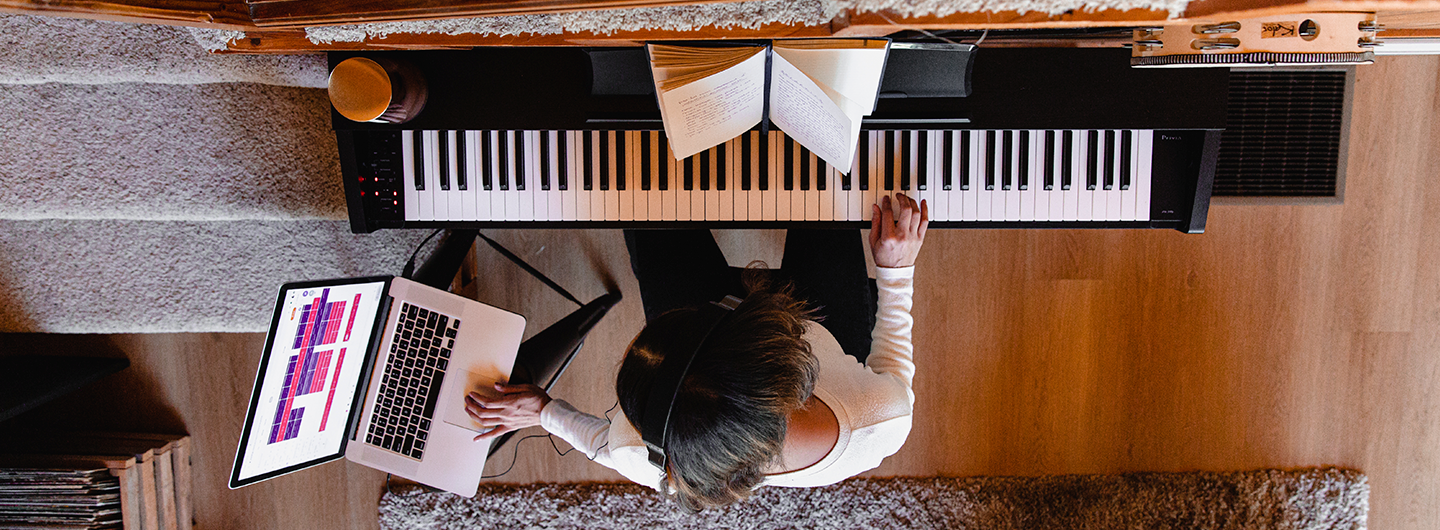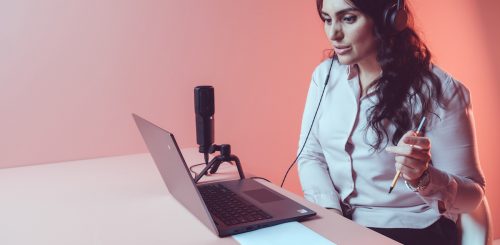
Mixing Music in 2023
August 4, 2023The Welcome to the wonderful world of music production! If you’ve ever been swept away by a beautifully produced song, where each instrument fits perfectly and the vocals seem to wrap around you like a warm blanket, then you’ve experienced the power of mixing music. In fact, mixing is a tenant in elevating any audio platform, whether its music, podcasting, or another medium.
Mixing is the process that takes place after all the individual parts of a song have been recorded. This is when these various components, such as vocals, guitar, bass, drums, and keyboards, are adjusted and combined to form the final musical piece we hear. It’s a critical step in the journey from concept to chart-topping hit or from a raw garage band sound to a polished studio recording.
Today, we’ll take a closer look at the process of mixing music, the science behind it, and the tools you can use to create your own beautifully mixed tracks. Whether you’re a seasoned producer or just starting out, there’s always more to discover in this fascinating field. So, let’s dive right in and turn the volume up on your mixing skills!
What is Mixing Music?
In its simplest form, mixing music involves balancing the various elements of a song to create a harmonious whole. This process includes adjusting volume levels, panning instruments to different areas of the stereo field, applying effects such as reverb or delay, and much more. It’s the delicate art of bringing together all the individual elements of a song and making them work together in harmony.
In music mixing, the person responsible for this process is the mixing engineer. This individual plays a crucial role in the music production process, as they shape the sound of the final product. Mixing engineers must possess both technical expertise and artistic sensibility, as they need to understand how to operate complex equipment and software. Additionally, they must appreciate and comprehend how to bring a musical vision to life.
Why is Mixing Music Important?
Mixing music is the natural next step in the music production process. After you’ve written your song and recorded each track, it’s time to tie everything together by balancing the levels, panning, and adding in any other groovy sound effects to make your music great!
If you don’t mix your music properly, your tracks might sound muddy, the vocals could be lost in a sea of instruments, or the whole song might lack the impact it needs to capture the listener’s attention. On the other hand, a well-mixed song offers a smooth, balanced sound where each instrument and vocal shines in its own right, while still contributing to the overall composition. Music mixed well provides clarity, depth, and adds that touch of professional gloss to your music.
The Art and Science of Mixing Music
As we embark on this journey into the world of music mixing, it’s essential to understand both its artistic and scientific aspects. After all, mixing is not merely about adjusting volume levels—it’s about enhancing the mood, energy, and emotion of a song.
The Science Behind Mixing
When you dive into the science of mixing, you’ll encounter concepts like sound frequencies and the stereo field.
Sound frequencies refer to the pitch of a sound. Lower frequencies correspond to bass or low-pitched sounds, while higher frequencies relate to treble or high-pitched sounds. In mixing, understanding frequencies is crucial because it allows you to ensure that each element of a track can be heard clearly, without competing with other elements. For example, you might need to reduce the bass frequencies in a guitar track to make sure it doesn’t interfere with the bass guitar or kick drum.
The stereo field, on the other hand, refers to the perception of where sounds are located when listening to music in stereo. Instruments can be ‘panned’ left, right, or center to create a sense of space and depth. This panning process is essential for creating a well-balanced and dynamic mix.
Choosing the Right DAW for Mixing Music
If you’re ready to mix music like a pro, you’ll need the right tools to help you along the way! Whether you’re mixing or mastering your tracks, you’ll use a Digital Audio Workstation, also known as a DAW.
Think of your DAW as a professional recording studio that’s accessible from any internet-connected device. If you’re using a cloud-based DAW like Soundtrap for Education, you can start mixing music from your mobile device or laptop and store your creations in the cloud.
And to sweeten the deal, Soundtrap for Education comes with plenty of collaborative features, so you can connect with fellow music makers from around the world while you work on your projects.
Essential Elements of Mixing Music
It takes to learn all there is to know about mixing music, but there are a few steps that are essential to any music-maker’s creative process. When you’re ready to mix your song, remember to include these essential elements. And if you need guidance, Soundtrap for Education has plenty of tutorials to guide you along the way!
Balance
One of the most critical aspects of mixing music is balance. This concept revolves around controlling the volume of different tracks and panning to achieve the right blend of sound. When discussing balance in a mix, we often refer to two things: volume balance and panning.
Volume balance is about making sure no element of the mix overpowers the others, while panning refers to the distribution of sound in the stereo field, placing different elements of the track in the listener’s left or right ear to create a sense of space.
Equalization (EQ)
Equalization, often abbreviated as EQ, is a fundamental tool in the mixing process. It allows you to boost or cut specific frequencies in a sound to help it stand out or blend better within the mix. A proper EQ can make your mix sound more balanced and can help eliminate problematic frequencies.
Compression
Compression is a tool used to control the dynamic range of a track, which is the difference between the loudest and softest part of a sound. By reducing this range, compression helps to maintain a consistent volume and prevent sudden, loud peaks. However, be careful not to over do it when compressing your tracks! Over-compression can make your mix sound lifeless and flat.
Reverb and Delay
Reverb and delay are effects that simulate space and depth in a mix, creating a sense of ambience. The reverb creates a series of echoes that decay gradually, while delay creates a repeat of the original sound at a fixed interval.
Some music-makers get overzealous when it comes to adding reverb or delay, but less is more! Too much reverb or delay can make your mix sound washed out.
Common Mistakes in Mixing Music and How to Avoid Them
Mixing music isn’t easy, and you’re bound to make a few mistakes as a beginner. Before you dive in and start mixing your first song, make sure you avoid these common mistakes!
Overusing EQ
Equalization is a powerful tool, but it’s also easy to misuse. Overusing EQ, especially boosting frequencies, can result in an unnatural-sounding mix. Instead of reaching for the EQ immediately, try adjusting volume levels or panning first.
You can avoid this mistake by:
- Always using EQ in context. Listen to the whole mix rather than soloing a track when making EQ decisions.
- Using subtractive EQ to minimize clashing frequencies instead of just boosting the ones you want to hear more.
Ignoring the Volume Balance
Another common mistake in mixing music is ignoring volume balance. When one element of the mix dominates the others, it can be distracting and make the mix sound unprofessional.
Keep your volume in check with these simple tips:
- Regularly checking your mix at different volume levels. What sounds balanced at high volume might not sound balanced at lower volumes.
- Using volume automation to control levels throughout the song, particularly for vocals or other key elements.
Overcompressing the Mix
Compression is a great tool to control dynamics, but too much compression can make a mix sound lifeless and flat. Steer clear of over-compression with this advice:
- Using compression sparingly and only when needed. Remember, the goal is to control dynamics, not eliminate them.
- Regularly comparing your compressed signal with the original. If the compressed signal lacks energy and dynamics compared to the original, you might be over compressing.
Misusing Reverb and Delay
Reverb and delay can add depth and space to a mix, but used excessively, they can result in a muddy and undefined sound. However, you can avoid this mistake by using reverb and delay sparingly. Remember, less is often more. Also, try using different types or settings of reverb and delay on different elements of the mix. This can create a sense of depth and avoid muddiness.
You Can Start Mixing Music with Soundtrap
In the evolving world of music production, new tools are consistently emerging to simplify and enhance the process. One of these revolutionary tools is Soundtrap, an online music studio that caters to professionals and beginners alike.
For beginners, Soundtrap offers interactive tutorials that guide users through the process of mixing a song. It helps teach the basics of balance, EQ, compression, reverb, and delay, ensuring a fundamental understanding of mixing principles. In addition, the collaborative nature of the platform allows for remote teamwork, making it a great tool for band projects or remote production work.
In essence, Soundtrap is a game-changer for those stepping into the music mixing world. By simplifying complex processes and providing a platform for learning and creativity, Soundtrap has made music mixing more accessible than ever before.
Mix Your Masterpiece with Soundtrap for Education
Soundtrap for Education is the ultimate audio production platform for students and teachers to create and edit audio recordings. Pupils and educators can easily tap into their artistic side with this intuitive audio platform that facilitates a creative learning environment for every subject, regardless of the student’s age or experience level.
With Soundtrap for Education, students and teachers can collaborate with advanced cloud technology anytime or anywhere. In addition, the platform comes equipped with a robust resource portal, with tutorials, an external curriculum, and lesson plans to complete the educational experience. And to ensure privacy, teachers can keep student collaboration safe and secure with invite-only groups in Soundtrap’s versatile digital environment.
If you’re ready to enhance your educational experience with an intuitive cloud-based audio production platform, get started today with Soundtrap for Education! And be sure to share this article with other teachers in your network to help spread the joy of learning through sound.
 EDU Portal
EDU Portal


